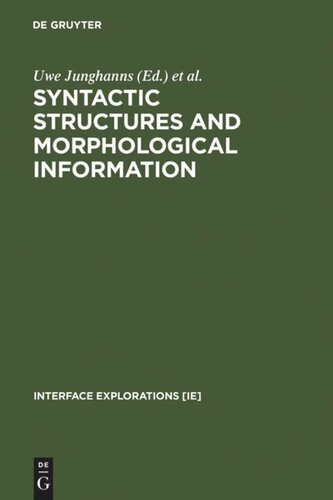

Most ebook files are in PDF format, so you can easily read them using various software such as Foxit Reader or directly on the Google Chrome browser.
Some ebook files are released by publishers in other formats such as .awz, .mobi, .epub, .fb2, etc. You may need to install specific software to read these formats on mobile/PC, such as Calibre.
Please read the tutorial at this link: https://ebookbell.com/faq
We offer FREE conversion to the popular formats you request; however, this may take some time. Therefore, right after payment, please email us, and we will try to provide the service as quickly as possible.
For some exceptional file formats or broken links (if any), please refrain from opening any disputes. Instead, email us first, and we will try to assist within a maximum of 6 hours.
EbookBell Team

5.0
90 reviewsThe book contains ten papers discussing issues of the relation between syntax and morphology from the perspective of morphologically rich languages including, among others, Indo-European languages, indigenous languages of the Americas, Turkish, and Hungarian. The overall question discussed in this book is to what extent morphological information shows up in syntactic structures and how this information is represented. The authors adopt different theoretical frameworks such as the Derivational Theory of Morphology, Distributed Optimality, Head-driven Phrase Structure Grammar, Lexical-Functional Grammar, Lexical Decomposition Grammar combined with Linking Theory and OT-like constraints, Paradigm-Based Morphosyntax as well as the Principles and Parameters Approach of Generative Grammar.